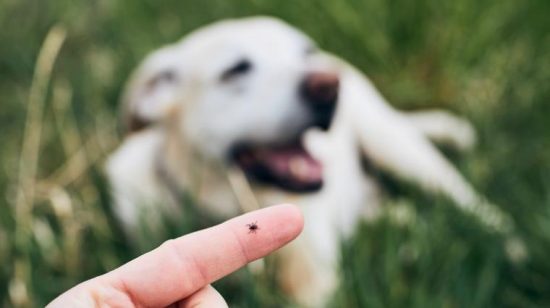How Many Teeth Do Dogs Have? A Guide to Canine Dentition
Discover your dog’s dental composition with our comprehensive guide on how many teeth dogs have and the essentials of canine oral health.
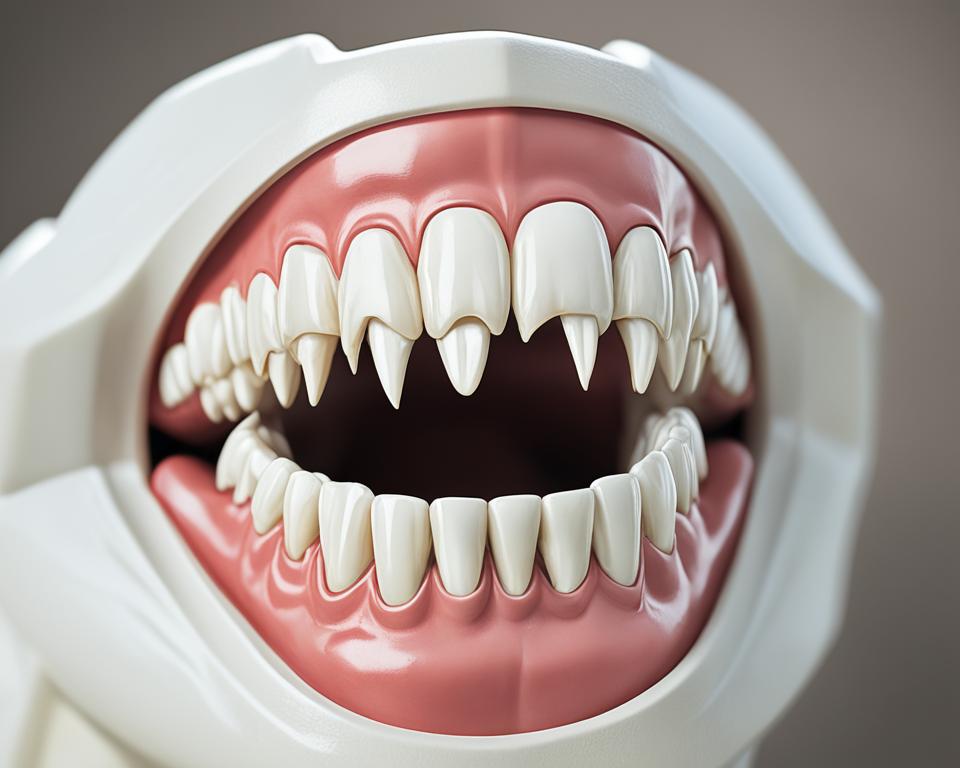
Have you ever wondered how many teeth your beloved dog has? Maybe you’re curious if dogs have the same number of teeth as humans or if tooth loss affects their overall health. Understanding your dog’s dental structure is essential for their well-being. So, How many teeth do dogs have? Dogs have a total of 42 teeth, which is quite impressive! They have 20 teeth in the upper jaw and 22 teeth in the lower jaw. But that’s not all there is to know about their teeth.
Canine Dental Anatomy Explained
Dogs have different types of teeth that serve specific functions. Understanding the dental anatomy of dogs is essential for proper dental care. The incisors are used for tearing meat and grooming. Canines, also known as fangs, are used for puncturing and holding onto objects. Premolars are used for shearing and grinding.
| Type of Tooth | Function |
|---|---|
| Incisors | Tearing meat and grooming |
| Canines | Puncturing and holding onto objects |
| Premolars | Shearing and grinding |
| Molars | Grinding and chewing |
When Do Puppies Get Their First Teeth?
Puppies start getting their first teeth around three to four weeks of age. This is an important milestone in their development as they transition from solely relying on their mother’s milk to being able to consume solid food. It’s an exciting time for both puppies and their owners, as they begin to explore different textures and flavors. The emergence of these tiny teeth marks the beginning of their journey towards adulthood.
To visualize this fascinating process, take a look at the image below:
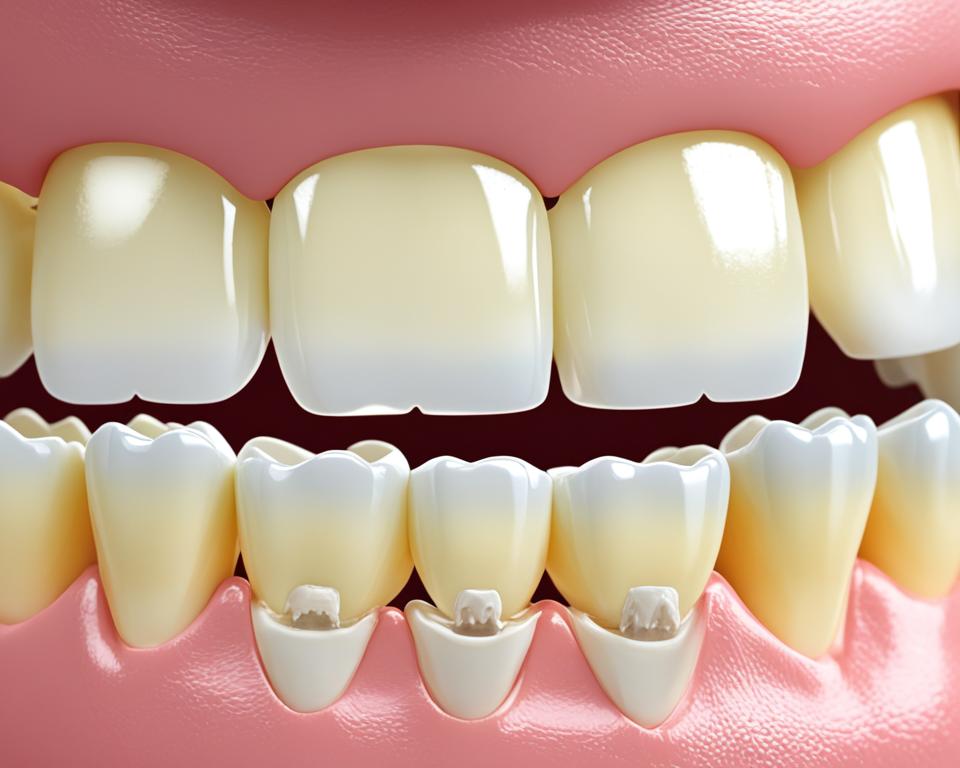
The Role of Milk Teeth in Puppies
Milk teeth, also known as deciduous teeth, play a crucial role in a puppy’s early development. These temporary teeth serve many purposes, including helping puppies chew solid food and gnaw on toys. They also play a role in the socialization process, as puppies learn to interact with their littermates and engage in gentle play behavior.
By the time puppies are three to five months old, they will have a full set of 28 milk teeth. These teeth are smaller and less durable compared to adult teeth, reflecting the puppy’s stage of growth. As the puppy grows, the milk teeth begin to loosen and are eventually replaced by their permanent adult teeth.
It’s important to note that during this transitional period, puppies may experience some discomfort or pain as their adult teeth start to emerge. Providing appropriate chew toys and maintaining a consistent oral hygiene routine can help alleviate any discomfort and promote healthy dental development.
Now, let’s take a closer look at the timeline of puppy teeth development in a table:
| Age | Developmental Stage |
|---|---|
| 3-4 weeks | First milk teeth emerge |
| 12-16 weeks | Full set of 28 milk teeth |
| 3-5 months | Start of adult teeth eruption |
As you can see from the table, the development of puppy teeth follows a relatively predictable timeline, but individual variations may occur. Understanding the development of puppy teeth is essential for providing appropriate care and monitoring your puppy’s dental health. By ensuring your puppy has a healthy mouth, you’re setting them up for a lifetime of good oral hygiene and overall well-being.
Transition to Adult Teeth in Dogs
The transition from puppy teeth to adult teeth is an important milestone in a dog’s dental development. Typically occurring between three and seven months of age, this period marks the replacement of the puppy’s baby teeth with permanent adult teeth.
During this transitional phase, the puppy’s baby teeth will gradually fall out, making room for the permanent teeth to grow in. The eruption of adult teeth can sometimes cause discomfort or tenderness in the puppy’s mouth, leading to increased chewing and gnawing behavior. An adult dog should have a total of 42 permanent teeth, with slight variations depending on the breed. The upper jaw consists of 20 teeth, while the lower jaw has 22 teeth. It is worth noting that the Chow Chow breed may have 44 teeth due to the presence of additional molars.
Proper dental care during this transitional period is crucial to ensure the healthy development of your dog’s teeth. Regular dental check-ups and a balanced diet can help support the growth of strong and healthy adult teeth. Additionally, providing appropriate chew toys and dental treats can help satisfy your dog’s urge to chew and promote good oral hygiene. Understanding the transition from puppy teeth to adult teeth and the different functions of each type of tooth can help pet owners provide appropriate dental care for their dogs. Regular dental check-ups, a balanced diet, and practicing good oral hygiene can contribute to your dog’s overall oral health and well-being.
How Many Teeth Do Dogs Have?
Adult dogs have a total of 42 teeth, which are distributed evenly between the upper and lower jaws. This adult dog dental chart provides an overview of the different types of teeth and their functions:
| Tooth Type | Location | Function |
|---|---|---|
| Incisors | Front of the mouth | Used for grasping and holding objects |
| Canines | Next to the incisors | Used for tearing and gripping prey |
| Premolars | Behind the canines | Used for cutting and shearing food |
| Molars | Located at the back of the mouth | Used for grinding and chewing |
The dental structure of most dogs follows this chart, but there may be slight variations across different breeds. While the number of teeth remains the same for most adult dogs, the arrangement and size of the teeth may vary slightly between different breeds. Some breeds, such as the Chow Chow, may have an additional pair of molars, resulting in a total of 44 teeth. It’s important to consider these variations when providing dental care and checkups for specific breeds.
Understanding the Four Main Types of Dog Teeth
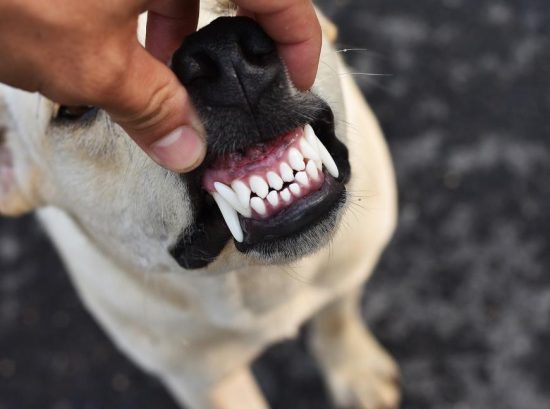
Dogs have four main types of teeth – incisors, canines, premolars, and molars. Each type of tooth has a specific function that contributes to a dog’s overall oral health.
Incisors
Incisors are the small, sharp teeth located at the front of a dog’s mouth. Dogs have twelve incisors in total, six on the top and six on the bottom. These teeth are primarily used for grasping and nibbling on food, grooming fur, and picking up objects. Incisors play a crucial role in maintaining a dog’s overall dental health, as they are essential for biting and tearing food into manageable pieces before it is chewed further by the other teeth.
Canines
Canine teeth, also known as cuspids or fangs, are the long, pointed teeth located next to the incisors. Dogs have four canines, one on each side of the upper and lower jaws. These teeth are designed for gripping and tearing meat, which is vital for their carnivorous diet. Canines also serve as a defensive tool, allowing dogs to protect themselves and their territory. Their length and sharpness make them the most prominent and recognizable teeth in a dog’s mouth.
Premolars
Premolars are located behind the canines and are used for slicing and shearing food. Dogs have sixteen premolars, eight on the top and eight on the bottom. These teeth have flat surfaces with ridges, making them ideal for breaking down and chewing food into smaller, digestible pieces. Premolars are crucial for a dog’s ability to process a variety of foods, including both meat and plant matter, contributing to their omnivorous dietary needs.
Molars
Molars are the large, flat teeth located at the back of a dog’s mouth. Dogs have ten molars, four on the top and six on the bottom. These teeth are designed for grinding and crushing food, allowing dogs to chew and digest their meals thoroughly. Molars are especially important for processing harder foods and bones, which are often part of a dog’s diet. Proper molar function ensures that a dog can efficiently break down food to absorb the necessary nutrients for overall health and well-being.
Understanding the functions of these four main types of dog teeth is vital for maintaining your dog’s oral health. Regular dental care, including brushing their teeth and providing appropriate chew toys, can help keep their teeth clean and prevent dental problems.
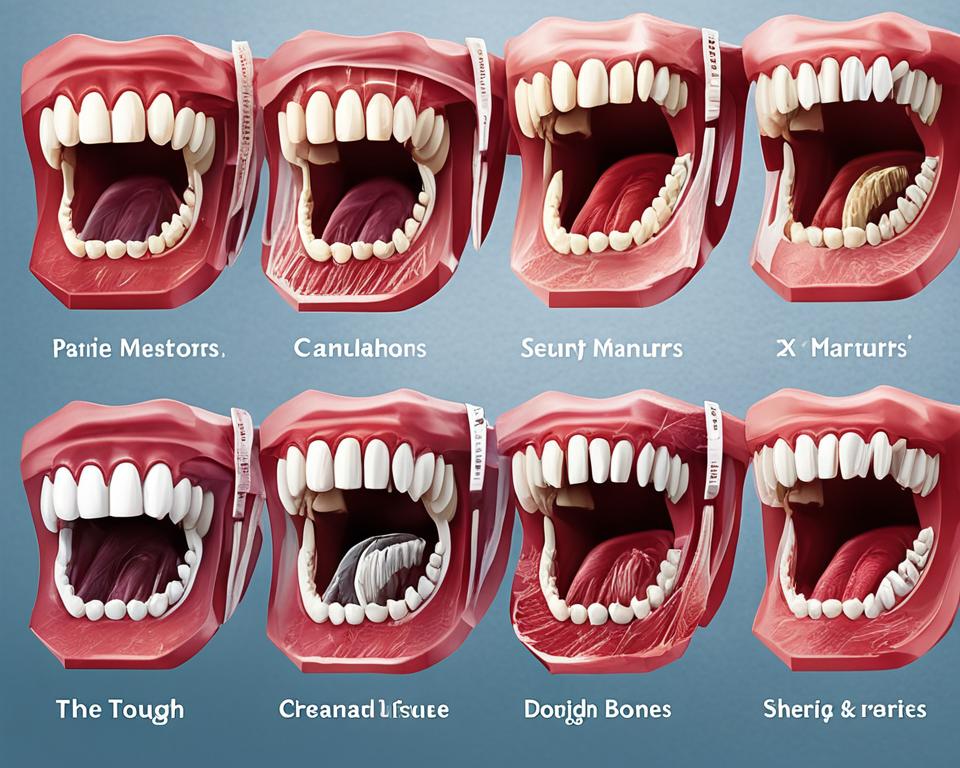
Common Dental Problems and Tooth Loss in Dogs
Proper dental care is crucial for maintaining a dog’s oral health and overall well-being. Dental problems can lead to tooth loss and have a significant impact on a dog’s quality of life. Understanding the causes of tooth loss in dogs and recognizing the signs of dental disease are essential for early detection and intervention.
Causes of Tooth Loss in Dogs
Tooth loss in dogs can be attributed to various factors, with the most common cause being periodontal disease. Periodontal disease occurs when plaque and tartar build-up on the teeth, leading to inflammation and infection of the gum tissue. Over time, if left untreated, periodontal disease can result in tooth loss.
Other causes of tooth loss in dogs include trauma and tooth decay. Trauma to the mouth, such as from accidents or rough play, can cause teeth to become loose or dislodged. Tooth decay, often seen in dogs that consume a diet high in sugar or from poor oral hygiene, can weaken the structure of the teeth, leading to tooth loss.
Signs of Dental Disease and When to Contact Your Vet
Recognizing the signs of dental disease in dogs is crucial for timely intervention. Some common signs of dental disease include:
- Bad breath
- Swollen or bleeding gums
- Loose teeth
- Difficulty chewing or eating
- Visible tartar or plaque buildup
If you notice any of these signs in your dog, it is important to contact your vet for a dental evaluation. Early detection and treatment can help prevent further dental problems and ensure your dog’s oral health.
| Dental Problems in Dogs | Causes | Signs |
|---|---|---|
| Periodontal disease | Plaque and tartar buildup | Bad breath, swollen gums, loose teeth |
| Trauma | Accidents, rough play | Loose or dislodged teeth |
| Tooth decay | High sugar diet, poor oral hygiene | Weakened teeth, visible decay |
Dental Care: Maintaining Your Dog’s Oral Health
Proper dental care is essential for maintaining a dog’s oral health. Just like humans, dogs can develop dental issues such as plaque buildup, tartar formation, and gum disease. Implementing a regular dental care routine can help prevent these problems and keep your dog’s teeth and gums healthy.
How to Brush Your Dog’s Teeth Properly
Brushing your dog’s teeth is an important aspect of their dental care. Ideally, you should aim to brush your dog’s teeth daily, but even a few times a week can make a significant difference. Here’s how you can brush your dog’s teeth properly:
- Choose a soft-bristled toothbrush or a finger brush designed specifically for dogs.
- Use dog-friendly toothpaste, as human toothpaste can contain ingredients that may harm dogs.
- Gently lift your dog’s lips and brush their teeth in a circular motion, paying close attention to the gum line.
- Focus on the outer surfaces of the teeth, as dogs typically have more plaque and tartar buildup there.
- Gradually introduce tooth brushing to your dog by starting with short sessions and rewarding them with praise and treats.
Regular tooth brushing not only helps remove plaque and tartar but also allows you to inspect your dog’s teeth and gums for any signs of dental issues. If you notice any abnormalities or concerns, it’s best to consult with your veterinarian.
Diet and Its Impact on Dental Health
Diet plays a crucial role in your dog’s dental health. Certain types of food and treats can help reduce plaque and tartar buildup, while others may contribute to dental issues. Consider the following tips when it comes to your dog’s diet:
- Choose premium quality dog food that is specifically formulated to promote dental health.
- Opt for dry kibble rather than wet food, as the chewing action involved in consuming dry kibble can help remove plaque.
- Consider dental treats and chews designed to promote oral hygiene and reduce tartar formation. However, to avoid choking hazards, make sure to choose treats appropriate for your dog’s size and breed.
- Avoid feeding your dog table scraps or foods high in sugar and carbohydrates, as they can contribute to dental issues.
In addition to a balanced diet, regular dental checkups are essential for your dog’s oral health. Your veterinarian can perform professional dental cleanings, assess your dog’s dental health, and provide further recommendations for maintenance.
FAQs on how many teeth do dogs have
How many teeth do little dogs have?
Little dogs have the same number of teeth as larger dogs – 42 in total.
Do dogs have 42 teeth?
Yes, dogs have 42 teeth in total.
How many teeth can a dog lose?
Dogs can lose teeth due to periodontal disease, trauma, or tooth decay. The number of teeth they lose can vary depending on the individual case.
Can dogs survive without teeth?
Yes, dogs can survive without teeth and adjust their diet accordingly. Soft and wet foods are recommended for dogs without teeth.
Do dead teeth hurt dogs?
Dead teeth can cause pain and discomfort for dogs. It is important to address any dental issues promptly to alleviate their discomfort.
Is it bad to remove dogs’ teeth?
The removal of a dog’s teeth should only be done under the guidance of a veterinarian and in necessary situations to maintain the dog’s health and quality of life.
Are dogs okay if they lose teeth?
Dogs can adapt to tooth loss and live a normal life. However, regular dental checkups are still important for monitoring their oral health and ensuring any underlying issues are addressed.

